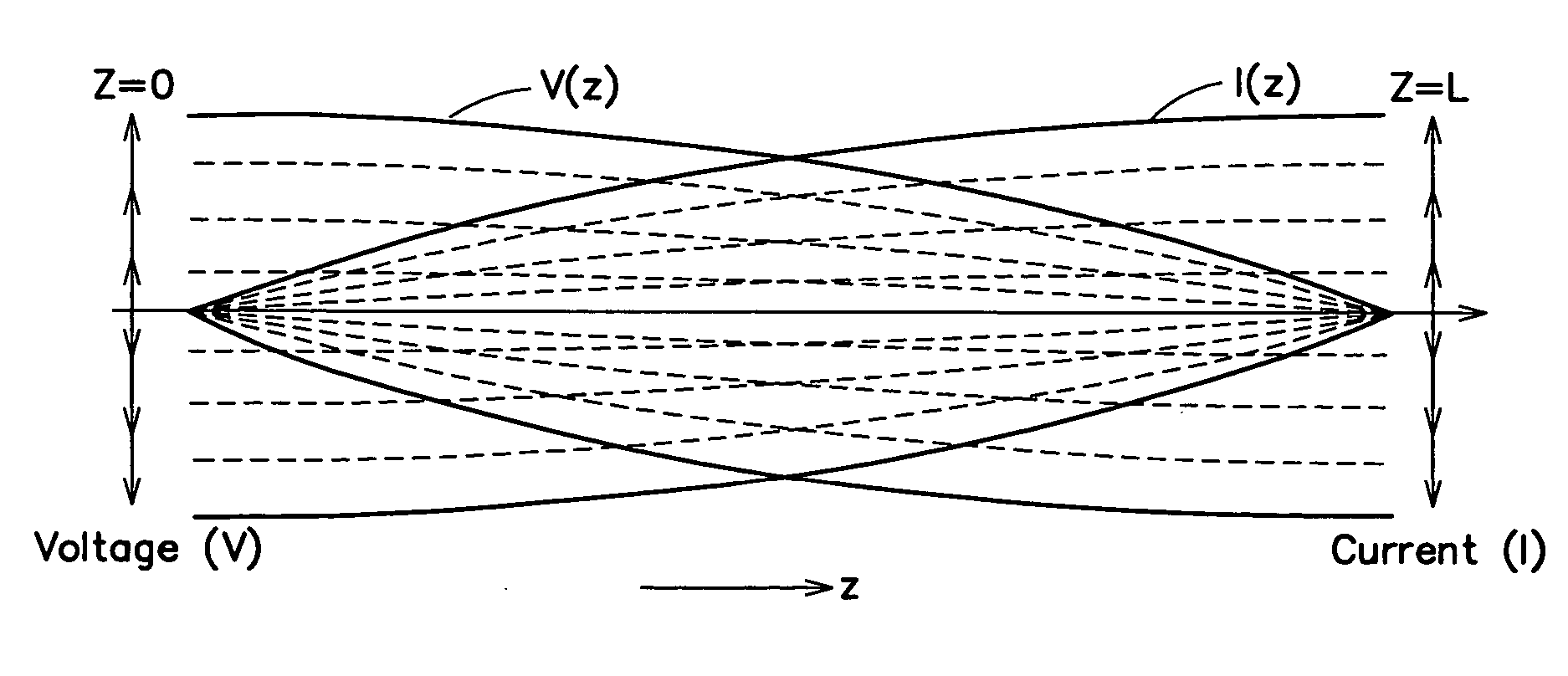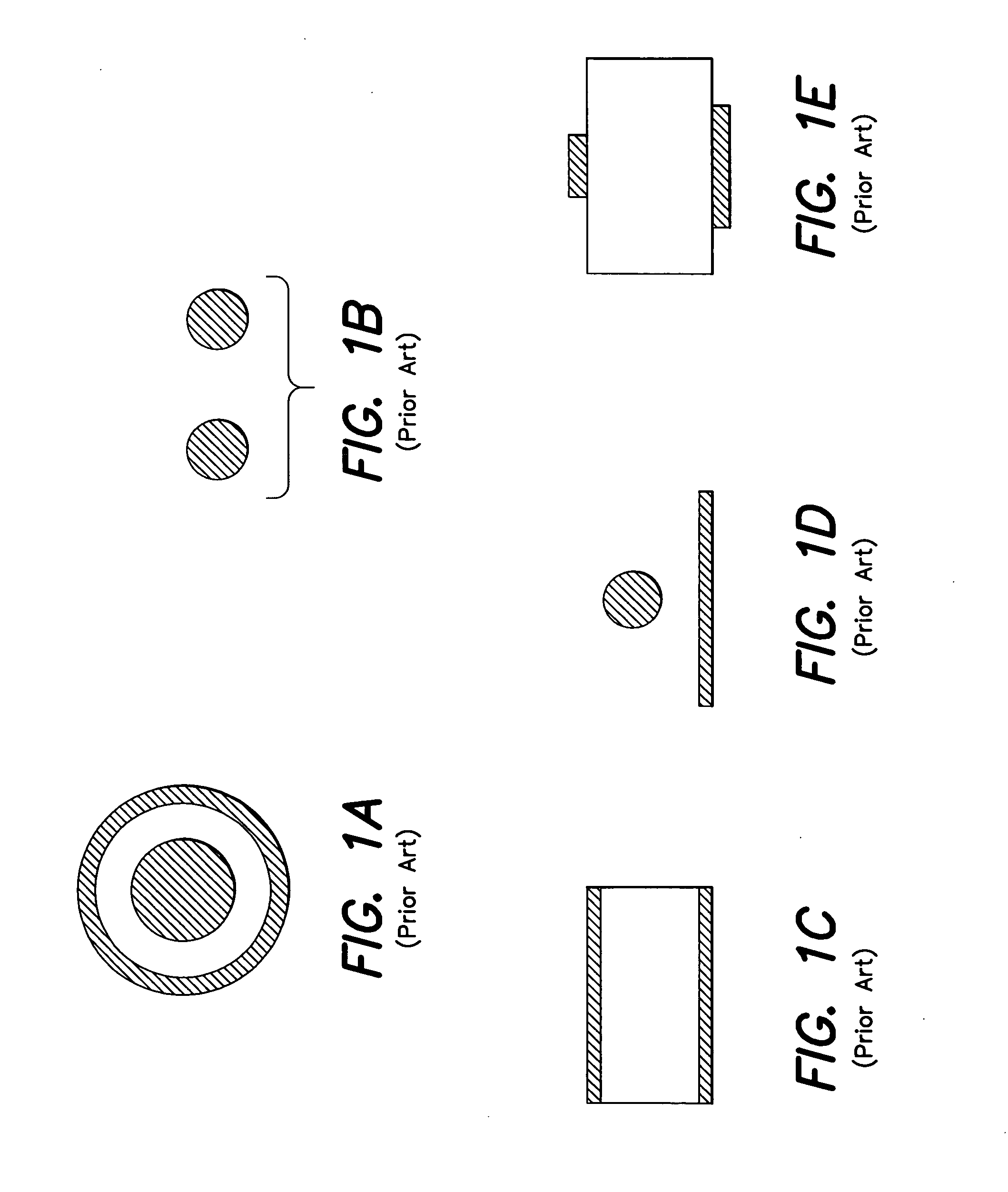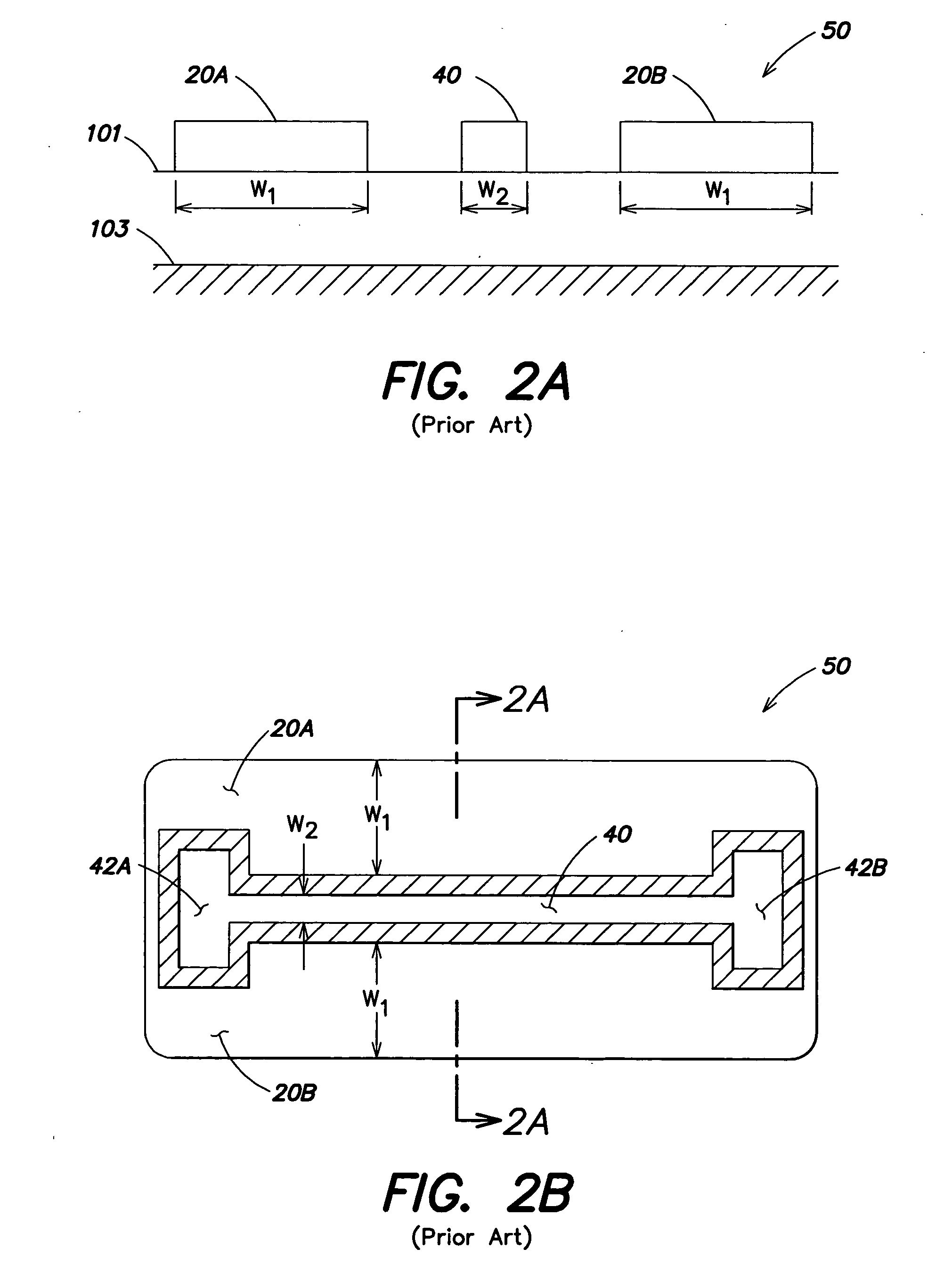Methods and apparatus based on coplanar striplines
a coplanar stripline and coplanar waveguide technology, applied in waveguides, oscillator generators, semiconductor/solid-state device details, etc., can solve problems such as “unbalanced” coplanar waveguides, achieve low-loss single-mode operation, overcome coplanar stripline loss, and reduce power consumption by the swo
- Summary
- Abstract
- Description
- Claims
- Application Information
AI Technical Summary
Benefits of technology
Problems solved by technology
Method used
Image
Examples
Embodiment Construction
As discussed above in the Summary, various embodiments of the present disclosure are directed to methods and apparatus involving semiconductor devices based on coplanar striplines (CPS). Applicants have recognized and appreciated that a variety of coplanar stripline configurations may form the basis of several useful high-speed microelectronic devices for a host of applications. Examples of CPS-based devices incorporating various concepts according to the present disclosure include, but are not limited to, impedance matching devices, devices for power combining and division, delays, resonators, oscillators, filters, amplifiers, mixers and the like, including CMOS-based implementations of such devices.
In general, high-speed microelectronic devices based on coplanar stripline implementations according to various embodiments of the present invention may support differential signals in a range of approximately from 1 Gigahertz to approximately 100 Gigahertz, although it should be app...
PUM
 Login to View More
Login to View More Abstract
Description
Claims
Application Information
 Login to View More
Login to View More - R&D
- Intellectual Property
- Life Sciences
- Materials
- Tech Scout
- Unparalleled Data Quality
- Higher Quality Content
- 60% Fewer Hallucinations
Browse by: Latest US Patents, China's latest patents, Technical Efficacy Thesaurus, Application Domain, Technology Topic, Popular Technical Reports.
© 2025 PatSnap. All rights reserved.Legal|Privacy policy|Modern Slavery Act Transparency Statement|Sitemap|About US| Contact US: help@patsnap.com



